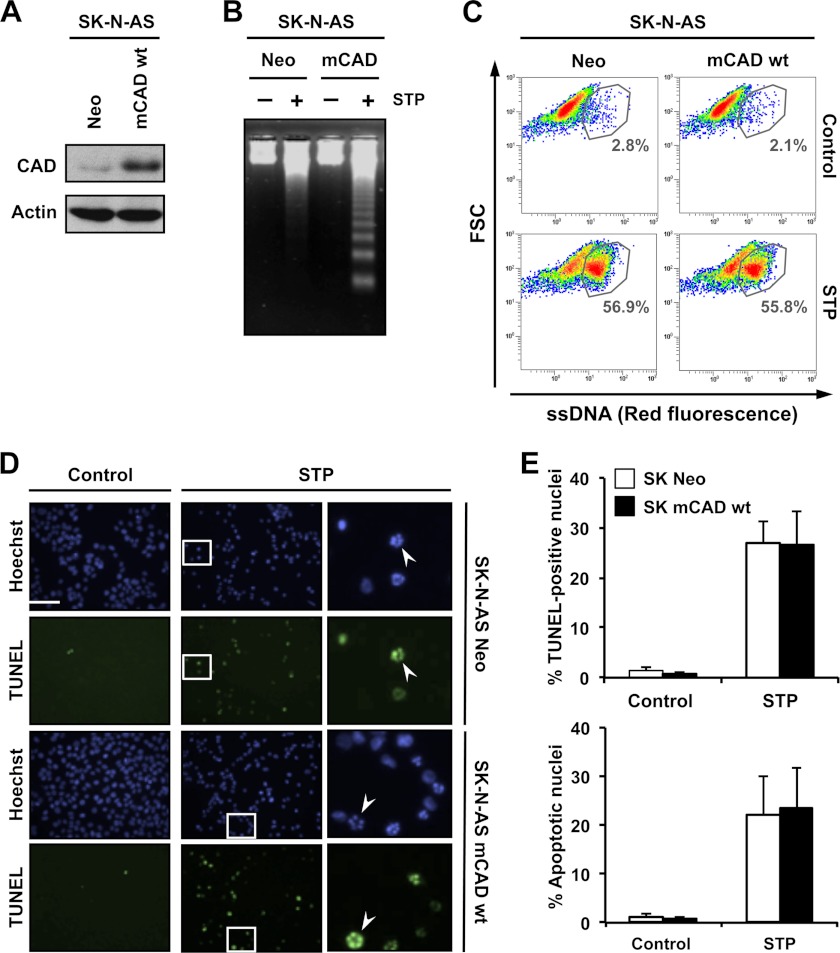FIGURE 7.
mCAD overexpression in SK-N-AS cells does not alter the percentage of STP-treated cells displaying ssDNA damage even though oligonucleosomal DNA degradation is observed. SK-N-AS cells stably transfected with empty pcDNA3 (Neo) or pcDNA3-mCAD wild-type (mCAD WT) were left untreated (Control) or treated with 1 μm STP for 4 h. A, total protein extracts from untreated cells were analyzed by Western blot analysis to confirm the overexpression of mCAD. The membrane was reprobed with an antibody against actin as a loading control. B, genomic DNA analysis of both stably transfected cell lines after treatment with STP (+) or no treatment (−). C, flow cytometry analysis of ssDNA damage using the monoclonal antibody F7-26. Data is shown as density plots representing size (y axis, in a logarithm scale) versus intensity of red fluorescence (x axis, in a logarithm scale). FSC, forward scatter of light. Cell density (events) is shown on a pseudocolor scale from minimum density (blue) to maximum density (red). The circled populations correspond to cells presenting ssDNA damage. The percentage of gated cells in each condition is indicated. The experiment was repeated three times with a low variability (< 5%). D, TUNEL reactivity and Hoechst nuclear staining from control and STP-treated cells were assessed. Representative images are indicated. The right panels are magnifications of the insets in the center panels. The arrowheads indicate apoptotic nuclei, which are also positive for TUNEL reactivity. Scale bar = 40 μm. E, quantification of TUNEL-positive nuclei (upper panel) and apoptotic nuclei (lower panel) in SK-N-AS Neo (white bars) and SK-N-AS mCAD WT (black bars) cells from D. The means ± S.E. of three independent experiments are represented.

